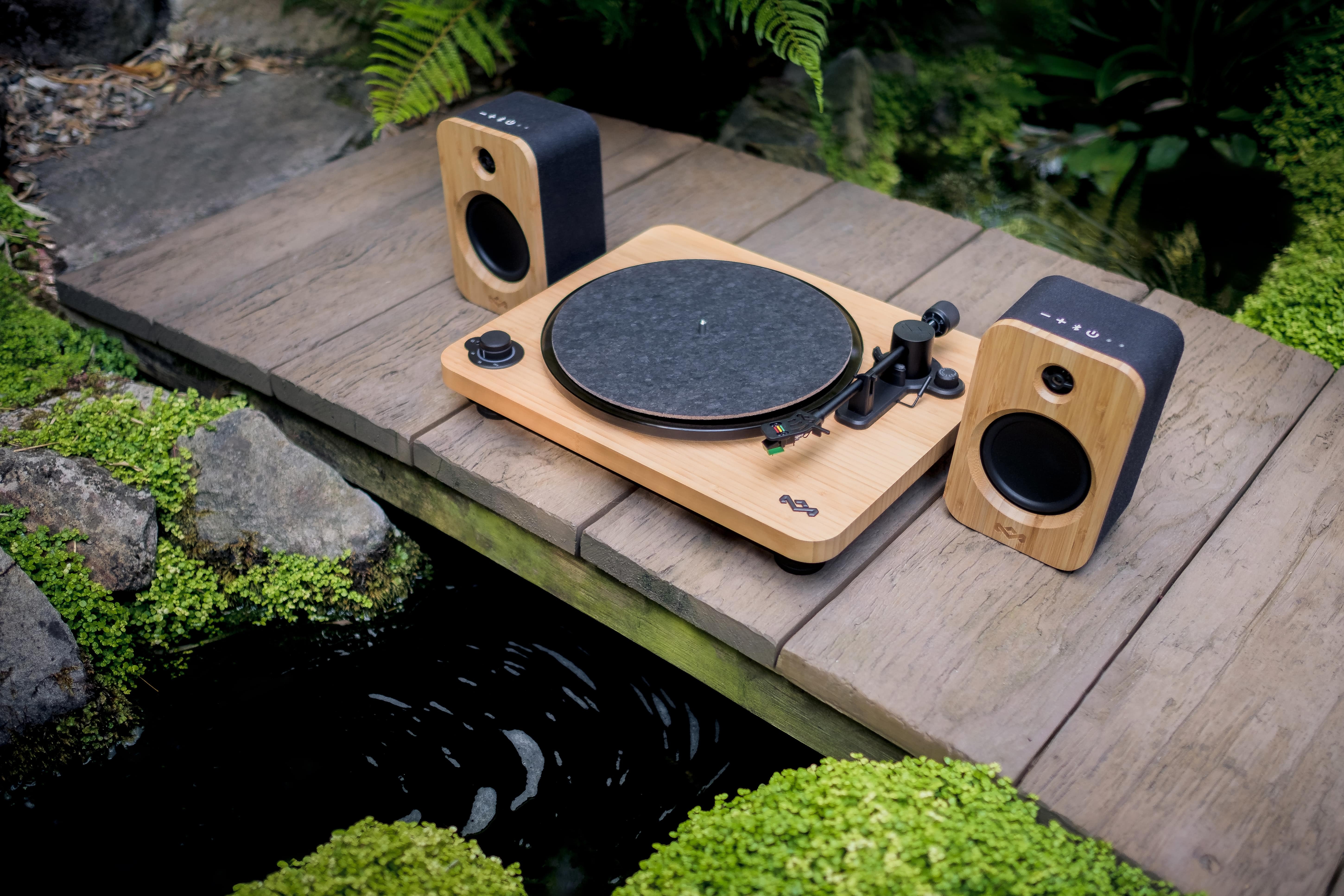When Thomas Edison perfected the phonograph in 1877, he likely couldn’t have imagined how profoundly it would transform the way humans experience music. Yet, over time, this invention laid the groundwork for a new era of sound reproduction. Thanks to further innovations by Alexander Graham Bell, Emile Berliner, and Peter Carl Goldmark, the journey from crude sound recordings to high-fidelity audio began.
What we now refer to as record players reached their peak in the mid-20th century before gradually declining with the rise of cassette tapes, CDs, portable devices, and eventually streaming services. However, in recent years, there has been a remarkable revival of vinyl, driven by companies like House of Marley, which continue to champion the art of analog sound.
So, when exactly were record players invented, and what was the historical context behind them? How did they shape the music industry and influence modern listening habits?
The Early Beginnings
The dream of capturing and replaying sound is deeply rooted in human curiosity and the desire for communication. While the concept of sound recording may seem modern, its origins trace back to the late 19th century, with the development of the phonautograph—a device that could visually represent sound waves but not play them back.
The Phonautograph and Its Limitations
In 1857, Édouard-Léon Scott de Martinville patented the phonautograph, an early device that etched sound vibrations onto paper. Though groundbreaking, it lacked the ability to reproduce sound. It wasn’t until 2008 that researchers successfully played back one of his original recordings, revealing the first known recorded voice.
Thomas Edison's Phonograph
Thomas Edison, one of history’s most prolific inventors, created the phonograph in 1877. This device used tin foil cylinders to capture and play back sound, marking the first practical method of recording and reproducing audio. Edison initially envisioned the phonograph as a tool for business, such as dictation, but it soon found its place in entertainment, paving the way for recorded music.
Advancements and Innovations
Edison’s phonograph was just the beginning. In the following decades, inventors like Alexander Graham Bell and Emile Berliner refined the technology, leading to significant breakthroughs in audio quality and accessibility.
Alexander Graham Bell's Improvements
Bell, best known for inventing the telephone, also made important contributions to audio technology. At his Volta Laboratory, he and his team developed the graphophone, which used wax cylinders instead of tin foil. This innovation improved sound clarity and allowed for longer recordings, setting the stage for future developments in audio storage.
Emile Berliner's Gramophone
Emile Berliner revolutionized the field with his gramophone, introduced in 1887. Unlike earlier devices that used cylinders, Berliner’s design featured flat discs, which became the foundation for modern records. His lateral-cutting technique and use of durable materials helped make recorded music more accessible to the public.
The Golden Age of Record Players
Though the earliest versions of record players date back to the late 19th century, the golden age of turntables truly began in the 1950s. During this time, the music industry saw a surge in popularity for vinyl records, which would dominate the market for decades.
The Rise of Vinyl Records
Peter Carl Goldmark’s invention of the long-playing (LP) vinyl record in the 1940s transformed the industry. Made from durable vinyl rather than brittle shellac, these records offered superior sound quality and longer playing times. Goldmark also introduced the 33 1/3 rpm speed, which became the standard for LPs and remains in use today.
Stereo Sound and New Formats
In 1931, Alan Dower Blumlein pioneered stereo sound, creating a more immersive listening experience. The introduction of stereo LPs in the late 1950s marked a major shift in how people consumed music, making home audio systems more sophisticated and popular.

The Modern Era and Resurgence
For many years, record players seemed to be on the decline, overtaken by digital formats and streaming. But in the 21st century, vinyl has experienced a surprising and sustained comeback.
The Decline and Resurgence of Vinyl
As digital technology advanced, many believed that vinyl would fade into obscurity. However, the past two decades have seen a steady increase in vinyl sales, driven by a growing appreciation for the warmth and authenticity of analog sound. According to the RIAA, vinyl sales have increased for 17 consecutive years, proving that the format is far from dead.
Many collectors and audiophiles are drawn to the tactile experience of vinyl, from the artwork on the album covers to the ritual of placing a record on the turntable. This cultural movement has turned vinyl into more than just a music format—it’s a lifestyle choice.
Record Players Today
Modern record players combine the charm of vintage designs with cutting-edge technology. Wireless turntables, built-in amplifiers, and compatibility with smart speakers make them more convenient than ever. Whether you're using them with headphones or a high-quality speaker system, the analog sound of vinyl continues to captivate listeners around the world.
House of Marley's Dedication to Quality Sound
Despite being over 150 years old, the record player has never lost its relevance. It has evolved, adapting to new technologies while maintaining its core appeal. Today, it stands at the intersection of analog and digital, offering a unique listening experience that few other formats can match.
House of Marley embodies this spirit, blending modern innovation with a deep respect for the legacy of sound. Their products are designed to deliver exceptional audio quality, all while promoting sustainability and ethical production. For those who value both performance and purpose, House of Marley represents the best of both worlds.
Sources:
The Fondation Napoleon. THE PHONAUTOGRAPHE. https://www.napoleon.org/en/history-of-the-two-empires/objects/edouard-leon-scott-de-martinvilles-phonautographe/
The Sumter County Museum. The Edison Phonograph. https://www.sumtercountymuseum.org/blog-fromthecollection/the-edison-phonograph
Encyclopedia Britannica. Alexander Graham Bell. https://www.britannica.com/biography/Alexander-Graham-Bell#ref19880
Encyclopedia Britannica. Emil Berliner. https://www.britannica.com/biography/Emil-Berliner
National Inventors Hall of Fame. Peter C. Goldmark. https://www.invent.org/inductees/peter-c-goldmark
Emastered Blog. Stereophonic Sound: All You Need to Know About It. https://emastered.com/blog/stereophonic-sound
The Recording Industry Association of America. Year-end 2023 RIAA Revenue Statistics. https://www.riaa.com/wp-content/uploads/2024/03/2023-Year-End-Revenue-Statistics.pdf
bopp matt thermal lamination film,anti-scratch film,thermal lamination film manufacturers
GR (SHANDONG) NEW MATERIAL CO., LTD , https://www.grmaterial-film.com